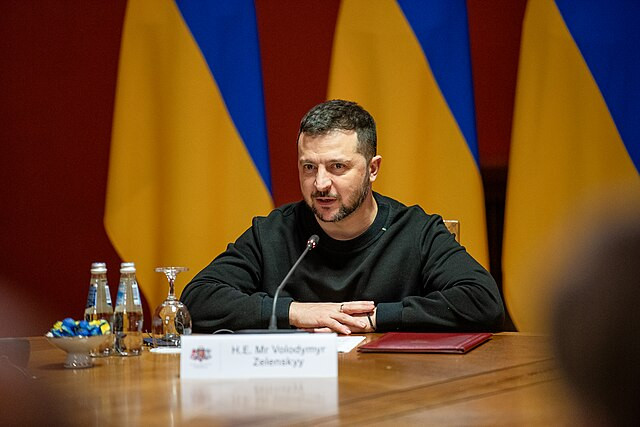Ukraine launched a significant drone assault deep into Russian territory early Wednesday, targeting a fuel depot serving the Engels-2 military airfield in the Saratov region. The depot, located approximately 400 miles from Ukraine's border, provides critical support to Russia's strategic bomber fleet, which has been used to launch missile strikes across Ukraine.
The Ukrainian military confirmed the attack, describing it as a major logistical blow to Russia's ability to conduct airstrikes on civilian and infrastructure targets in Ukraine. "The destruction of the oil depot raises major logistic challenges for the strategic aviation of the Russian occupiers and significantly reduces their ability to strike at peaceful Ukrainian cities and civilian objects," Ukraine's military said in a statement.
Images and videos from the attack showed massive flames and thick plumes of smoke rising into the night sky. The fire reportedly continued to burn well into Wednesday morning. Geolocated footage verified by CNN captured the extent of the blaze, which illuminated the surrounding area.
The Engels-2 airfield, a key hub for Russia's nuclear-capable strategic bombers, has been a frequent target of Ukrainian drone strikes. While previous attempts were largely thwarted by Russian air defenses, the overnight assault appears to have successfully penetrated these defenses.
Roman Busargin, governor of the Saratov region, confirmed the attack, describing it as a "massive" drone assault that caused damage to an industrial facility. Although he did not specify the targeted oil depot, Ukrainian officials identified it as the critical supply site for the Engels-2 airfield. Busargin also noted that no injuries were reported.
Ukraine's General Staff celebrated the strike as part of its strategy to disrupt Russian logistics and military capabilities. "The damage to the oil base creates serious logistical problems for the strategic aviation of the Russian occupiers and significantly reduces their ability to strike peaceful Ukrainian cities and civilian objects. To be continued," the General Staff said on Facebook.
The Russian Defense Ministry claimed its air defenses intercepted 23 Ukrainian drones during the assault, including 11 over Saratov. However, Ukrainian forces reported "numerous explosions" in the region, suggesting that several drones successfully reached their targets.
This latest attack highlights Ukraine's increasing reliance on domestically produced long-range drones to counter Russian aggression. Ukrainian President Volodymyr Zelenskyy has previously boasted about weapons capable of hitting targets up to 700 kilometers (435 miles) away. Some strikes have reportedly reached distances of over 1,000 kilometers (620 miles), showcasing the evolving sophistication of Ukraine's arsenal.
The Engels-2 airfield has come under repeated attacks since the war began in February 2022. In response to these threats, Russia has reportedly relocated much of its strategic bomber fleet to other regions. Nonetheless, the facility remains a critical node in Russia's military infrastructure, and Ukraine's ability to target it underscores a growing vulnerability.
Meanwhile, Russia launched its own drone attacks overnight, firing 64 drones at Ukrainian targets. Ukraine's air force reported intercepting 41 of them, while 22 failed to reach their destinations.
The escalating aerial exchanges come as both countries intensify efforts to shift the frontlines in the protracted conflict. Ukraine has also renewed its offensive in Russia's Kursk region, where it struck a Russian command post near the town of Belaya. Fighting has raged on multiple fronts, with both sides aiming to secure tactical advantages ahead of potential diplomatic developments.






